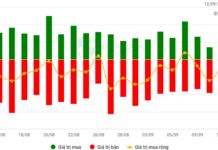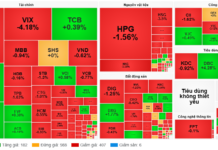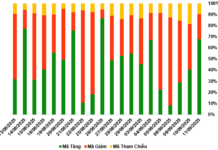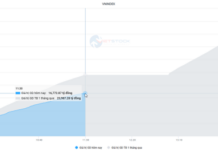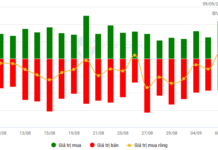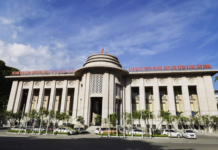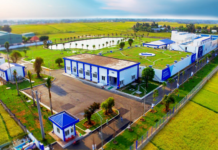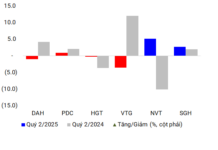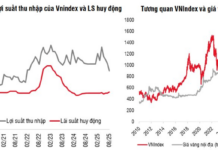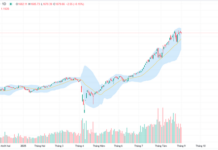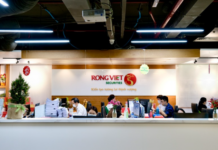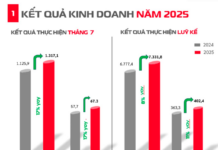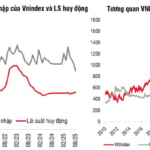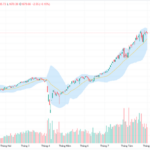According to the local newspaper Long An, the price of red-flesh dragon fruit in the province has increased significantly. Specifically, grade 1 red-flesh dragon fruit was purchased by traders at the farm for 35,000-37,000 VND/kg, grade 2 for 30,000-32,000 VND/kg, and grade 3 for 25,000-27,000 VND/kg, an increase of 10,000-15,000 VND/kg compared to the previous month. At this price, farmers have a profit of about 15,000 VND/kg of dragon fruit, equivalent to about 50% of the selling price. According to some other sources, the price and profit of dragon fruit are even several thousand VND/kg higher than the above level.
Dragon fruit farmers across the country are delighted as the off-season dragon fruit prices remain high.
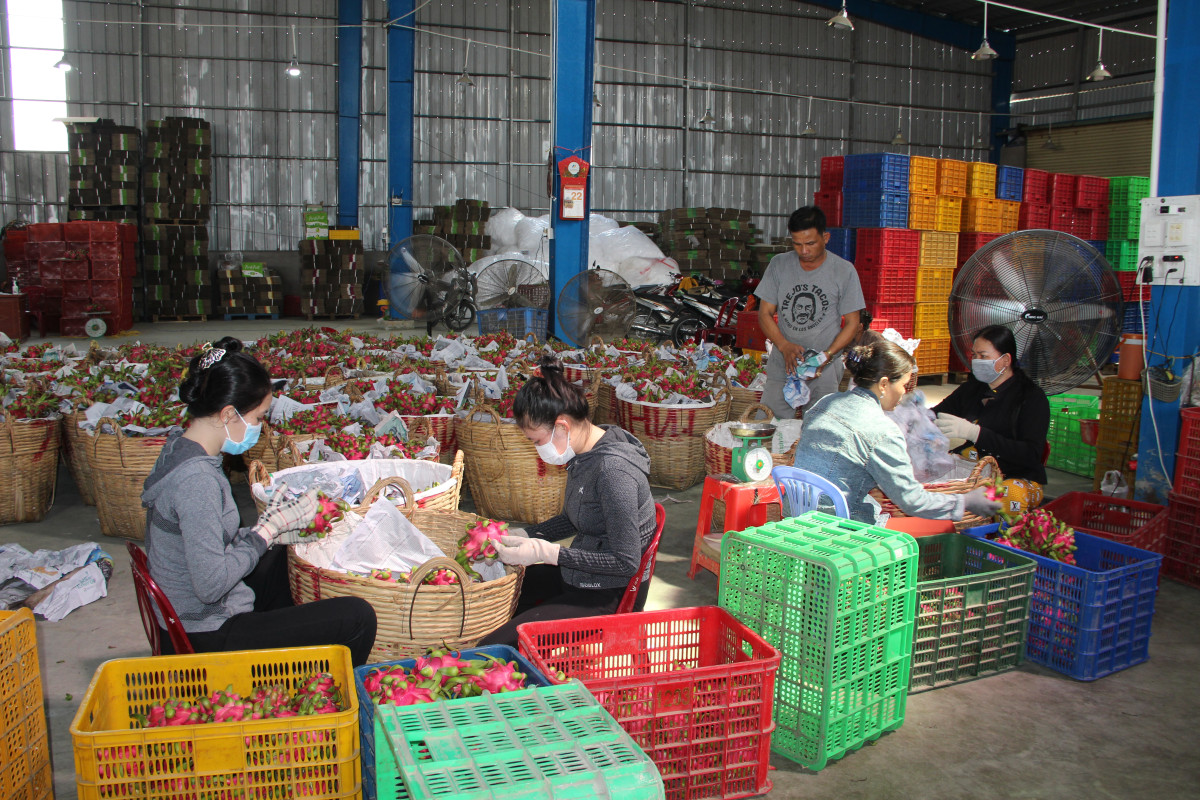
Workers process dragon fruit at a warehouse in Chau Thanh district, Long An province. Photo: Long An Newspaper.
Long An currently has over 7,800 hectares of dragon fruit, mainly concentrated in Chau Thanh, Tan Tru, Ben Luc districts, and Tan An city. Dragon fruit is a plant that is highly resistant to drought and salinity, and has few pests and diseases during the dry season.
During the dry season, the source of fresh water in many areas is limited, so dragon fruit farmers actively irrigate their orchards, keeping the trees green and productive. This is the off-season, so the area of dragon fruit harvested is not much, only 20-25% of the total area.
Ms. Nguyen Thi Lanh (Phu Nghia Tri commune, Chau Thanh district, Long An) has just harvested 2 hectares of dragon fruit, she said: “This season, my family actively produces off-season crops, although the productivity is not as high as in the previous seasons, thanks to the high selling price, we also have a good profit”.
Used to be animal feed
Meanwhile, Tran Van Hong in Ham Thuan Bac district (Binh Thuan) said that for the past two months, dragon fruit farmers here have been overjoyed as traders have come to the orchard to buy dragon fruit at high prices.
“Many traders even compete to place deposits with orchard owners to be able to purchase goods. My family has just sold more than 3 tons of white-flesh dragon fruit for the off-season at a price of 35,000 VND/kg, after deducting expenses, we earned a profit of more than 50 million VND. Currently, the family has about 2 tons nearly ready to harvest…”, Mr. Hong told the Cong Thuong Newspaper.
Long An province currently has more than 4,950 hectares of dragon fruit using high technology. Aiming to produce dragon fruit that meets export standards, Long An has built nearly 950 hectares of dragon fruit that meet VietGAP standards. The province has 228 dragon fruit growing area codes granted for export to the markets of: South Korea, Japan, the United States, Australia, New Zealand, the EU, Russia, the UK, and China.
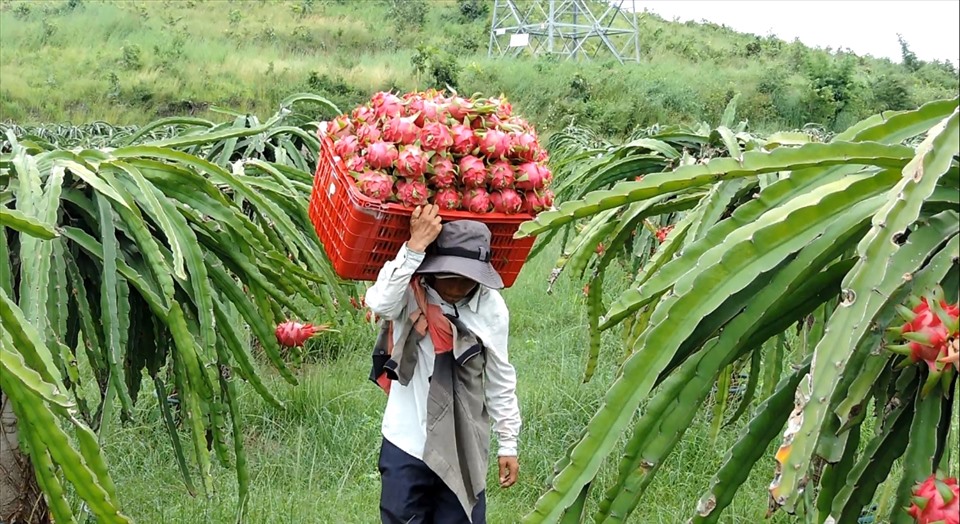
Having witnessed the low prices in 2023, the area of dragon fruit has decreased.
Mr. Dang Phuc Nguyen, General Secretary of the Vietnam Fruit and Vegetable Association (Vina Fruit), said that normally from December to April, China imports dragon fruit to meet domestic consumption demand. In particular, in the first quarter of 2024, the demand for dragon fruit for display during the Lunar New Year and Ching Ming Festival causes the price of Vietnamese dragon fruit to remain high.
In addition, the area of dragon fruit in the country is also decreasing because the price of dragon fruit in 2023 was low, causing many farmers to switch to planting other crops such as durian, jackfruit… There was a time when there was no market for harvested dragon fruit, and in many places it had to be discarded or used as feed for cattle and buffalo. At that time, many initiatives to “rescue” dragon fruit were proposed, leading to the creation of dragon fruit bread, dragon fruit instant noodles… and many other products processed from this fruit, causing trends that stirred social media for a long time.
Currently, in addition to the Chinese market, Vietnamese dragon fruit is also exported to many other markets such as Thailand, Cambodia, Australia, New Zealand, Japan, South Korea… However, Mr. Nguyen also noted that from May to November, China will enter the dragon fruit harvest season, so the price of dragon fruit may decrease again.
(Synthesis)

